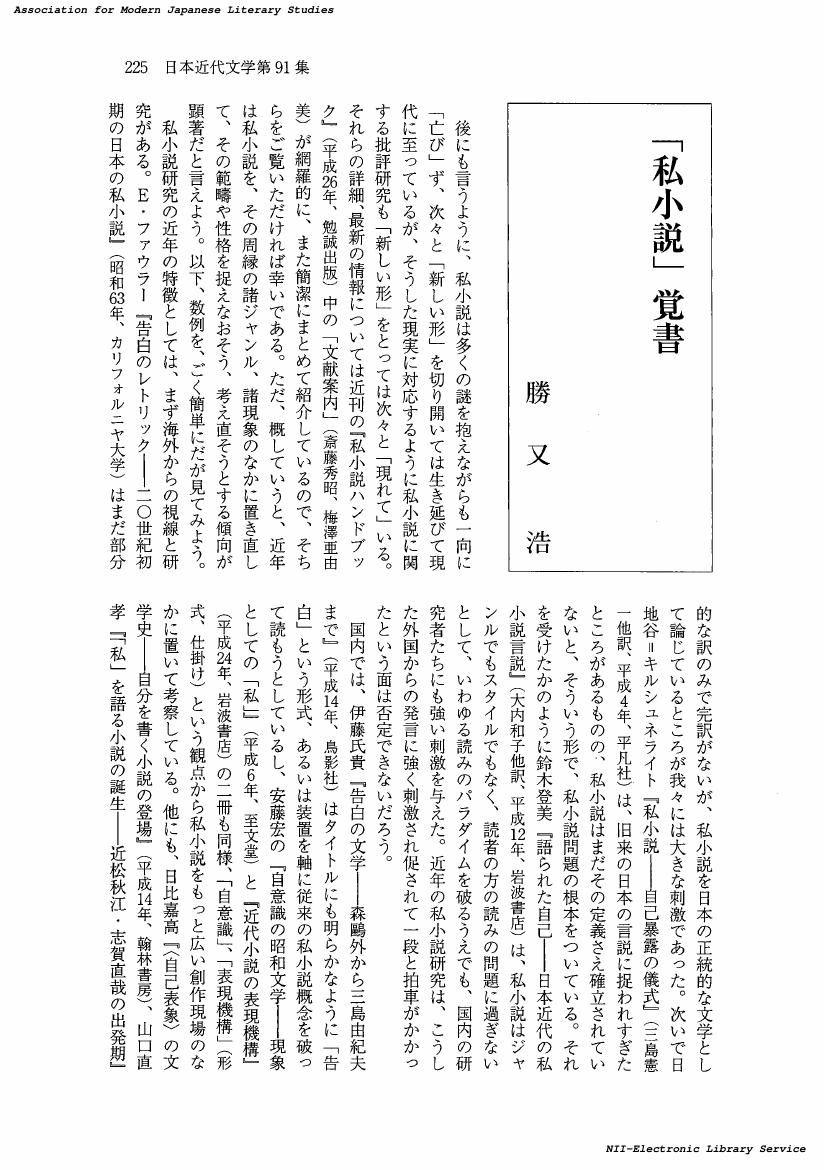3 0 0 0 「私小説」覚書(フォーラム 方法論の現在III)
- 著者
- 勝又 浩
- 出版者
- 日本近代文学会
- 雑誌
- 日本近代文学 (ISSN:05493749)
- 巻号頁・発行日
- vol.91, pp.225-228, 2014
1 0 0 0 OA 同人雑誌の位置
- 著者
- 勝又 浩
- 出版者
- 昭和文学会
- 雑誌
- 昭和文学研究 (ISSN:03883884)
- 巻号頁・発行日
- vol.49, pp.1-8, 2004-09-01 (Released:2023-05-15)
1 0 0 0 OA 高知県宿毛市沖の島における石垣
- 著者
- 漆原 和子 勝又 浩 藤塚 吉浩 谷口 誠一
- 出版者
- 法政大学国際日本学研究所
- 雑誌
- 国際日本学 = INTERNATIONAL JAPANESE STUDIES (ISSN:18838596)
- 巻号頁・発行日
- vol.5, pp.151-172, 2007-05-31
On the island of Okinoshima off the coast of Shikoku in the Uwa Sea are settlements situated on areas of flat ground secured out of steep terrain by stone walls. In Hirose, there remain stone walls built as windbreaks against typhoons and prevailing northwesterly winter winds. In Moshima, the stone windbreaks have been entirely replaced with concrete or block walls. The type of stone used on the island is Tertiary intrusive granite. The stonework is characterized by sharp corners, produced by stacking angularly cut stones at 90° angles to one another, and the walls are given a concave curvature when they exceed approximately two meters in height. In the case of long, high earth-retaining structures, stones are laid over the arched wall surface to increase strength. The stone walls on the island are in a typically Honshu style, the exemplar of which is Anō-zumi. Across the island, hidana are built instead of verandas. These temporary structures, which are unique to the island, are made from bamboo or PVC pipes that extend out from the stone walls of homes. However, some also span roads. Hidana provide shelter against the winds that ascend the steep terrain, allowing best use to be made of the scarce land available on the island.
1 0 0 0 小林秀雄--自意識の方法 (追悼 小林秀雄)
1 0 0 0 OA 「私小説」覚書(フォーラム 方法論の現在III)
- 著者
- 勝又 浩
- 出版者
- 日本近代文学会
- 雑誌
- 日本近代文学 (ISSN:05493749)
- 巻号頁・発行日
- vol.91, pp.225-228, 2014-11-15 (Released:2017-06-01)

